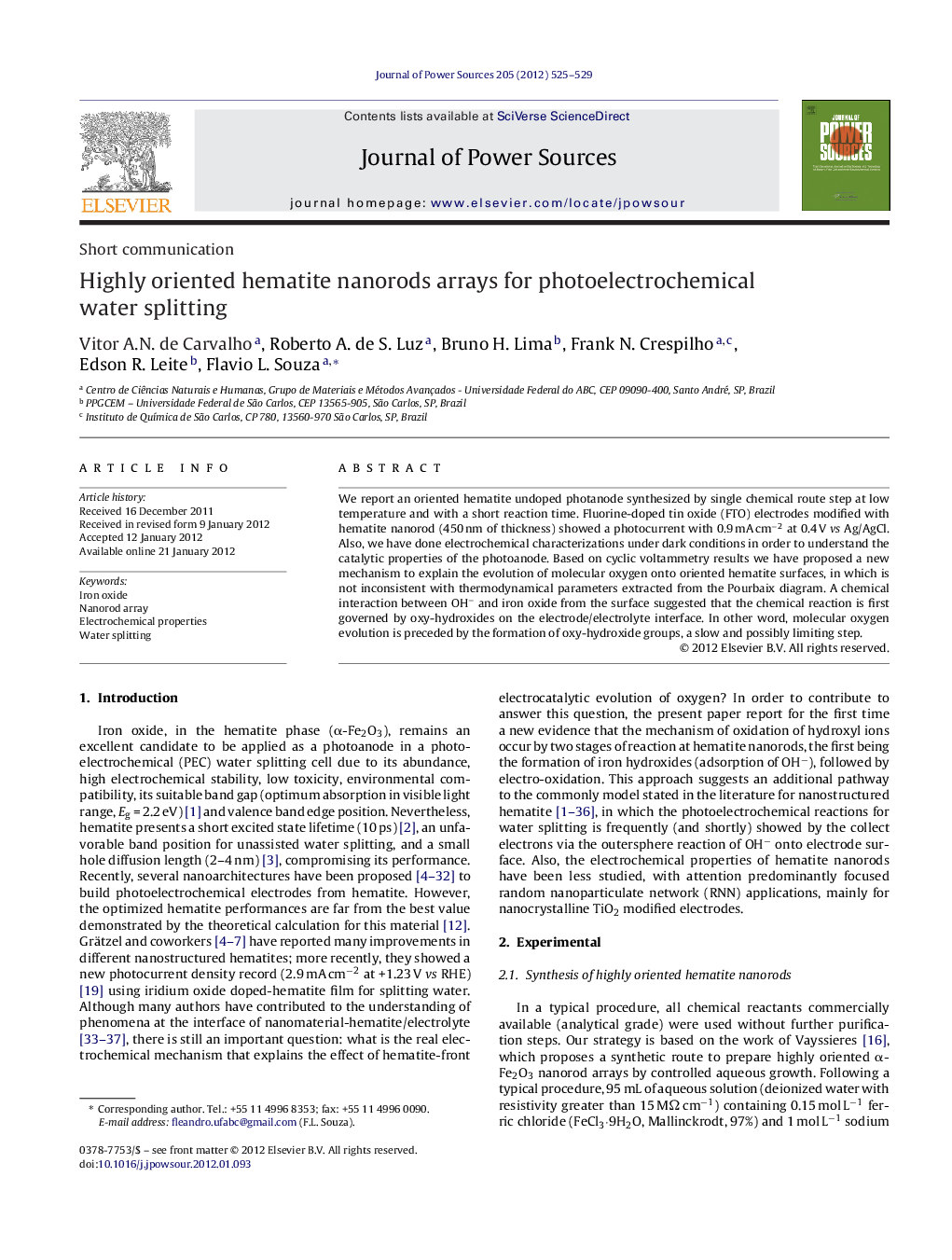| کد مقاله | کد نشریه | سال انتشار | مقاله انگلیسی | نسخه تمام متن |
|---|---|---|---|---|
| 1288180 | 1498027 | 2012 | 5 صفحه PDF | دانلود رایگان |

We report an oriented hematite undoped photanode synthesized by single chemical route step at low temperature and with a short reaction time. Fluorine-doped tin oxide (FTO) electrodes modified with hematite nanorod (450 nm of thickness) showed a photocurrent with 0.9 mA cm−2 at 0.4 V vs Ag/AgCl. Also, we have done electrochemical characterizations under dark conditions in order to understand the catalytic properties of the photoanode. Based on cyclic voltammetry results we have proposed a new mechanism to explain the evolution of molecular oxygen onto oriented hematite surfaces, in which is not inconsistent with thermodynamical parameters extracted from the Pourbaix diagram. A chemical interaction between OH− and iron oxide from the surface suggested that the chemical reaction is first governed by oxy-hydroxides on the electrode/electrolyte interface. In other word, molecular oxygen evolution is preceded by the formation of oxy-hydroxide groups, a slow and possibly limiting step.
► One-step approach to built hematite nanorods onto FTO surfaces.
► Hematite photoanode applied in photoelectrochemical water splitting.
► Evidence that the mechanism of oxidation of hydroxyl ions occur by two stages of reaction.
► First, the formation of clusters of iron hydroxides (adsorption of OH−).
► Second, electron oxidation.
Journal: Journal of Power Sources - Volume 205, 1 May 2012, Pages 525–529